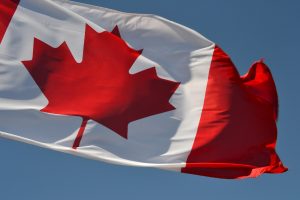[ad_1]
Helena needn’t fret about charges, skilled says: Non-registered financial savings alone will pay them now and certain for many years to return

Opinions and suggestions are unbiased and merchandise are independently chosen. Postmedia could earn an affiliate fee from purchases made by hyperlinks on this web page.
Article content material
A lady we’ll name Helena, 62, lives in Ontario. Retired and single, she has labored instead instructor for the previous 5 years. The earnings it gives, about $52,000 per 12 months on prime of her $69,600 annual defined-benefit pension from a profession as a instructor, is nice for now. However she worries whether or not she can have sufficient earnings in retirement to outlive a price squeeze pushed by rising rental charges, which might power her out of her dwelling or maybe shrivel her different spending.
Commercial
This commercial has not loaded but, however your article continues under.
Article content material
(Electronic mail [email protected] for a free Household Finance evaluation.)
Presently, Helena pays $1,230 in month-to-month rental charges and lives properly inside her means, explains Owen Winkelmolen, head of advice-only service Planeasy.ca in London, Ont. Her allocations with out RRSP, TFSA and different financial savings are simply $4,220 monthly. Her after-tax pension, $55,200 per 12 months, covers that price. Over and above that money move, she has $425,000 in non-registered financial savings in addition to $210,000 in her RRSP and $100,000 in her TFSA. Her mortgage is paid off, too.
Article content material
She needn’t fret about charges, Winkelmolen says: Non-registered financial savings alone will pay them now and certain for many years to return.
As an alternative, she ought to concentrate on her retirement goals, corresponding to shopping for a vacation property in Europe.
Commercial
This commercial has not loaded but, however your article continues under.
Article content material
Portfolio stability and backup
Helena craves construction. Accordingly, Winkelmolen suggests, she will put aside $80,000 at about 0.5 per cent in what is known as a excessive curiosity financial savings account as a backup for 2 years of spending. Taken from her $425,0000 non-registered financial savings, she can have $345,000 left over. She will be able to allocate $50,000 to assist buy, together with cash from different relations, land for the vacation property.
To keep up the holiday property, she’s going to want $12,000 per 12 months for gardening and utilities. That may elevate her core spending to $59,040 per 12 months. The remaining $295,000 will be invested in her non-registered funding account. That sum, with a 3 per cent return for the 33 years to her age 95, will generate $13,792 per 12 months.
Commercial
This commercial has not loaded but, however your article continues under.
Article content material
Helena’s RRSP, with a stability of $210,000 and a 3 per cent return after inflation, will generate $9,818 per 12 months in 2021 {dollars} for the 33 years to her age 95.
Her TFSA, with a $100,000 stability and three per cent development after inflation, will generate $4,675 per 12 months to age 95.
In 2022, Helena can have $52,000 employment earnings, $69,600 pension earnings, $9,818 RRSP earnings, $4,675 TFSA money move and non-registered earnings of $13,792. The sum of those money flows is $149,885, which is greater than she earned earlier than retiring. After common 30 per cent tax on all however TFSA earnings, she can have web earnings of $6,200 monthly. That’s about 1.6 instances her current month-to-month spending, $3,920, with no RRSP or different financial savings.
Price controls now and future
Helena doesn’t must generate a number of part-time earnings, so we are able to assume that for the years when she is 63 and 64 she earns simply $16,000. That reduces her anticipated earnings to $114,000, which remains to be greater than she earned earlier than retirement. Her web earnings with a 24 per cent tax price could be $86,650 or $7,220 monthly.
Commercial
This commercial has not loaded but, however your article continues under.
Article content material
Her prices will rise when she purchases the household property. Her primary prices will rise from $47,040 per 12 months to $59,040 per 12 months, however she’s going to nonetheless have a surplus of $27,610 for sudden prices or discretionary spending.
At 65, Helena, will see her job pension lose its $9,048 annual bridge and contract to $60,552 per 12 months. She’s going to be capable to add CPP earnings, $14,026 per 12 months, and OAS earnings of $7,623 per 12 months, RRSP earnings of $9,818, non-registered earnings of $13,792 and TFSA earnings of $4,675. That’s a complete of $110,486. Tax at 25 per cent on all however TFSA money move will depart $84,033. The OAS clawback will take 15 per cent of non-TFSA earnings over a set off level of $79,845 — web $25,966 on this case. The clawback will thus scale back her earnings by $3,894, leaving spendable earnings of $80,139 per 12 months or $6,700 monthly.
Commercial
This commercial has not loaded but, however your article continues under.
Article content material
Helena’s most important monetary drawback is the OAS clawback, Winkelmolen says. To cut back the affect of the clawback, Helena ought to draw down non-registered investments first and maximize her TFSA yearly, investing it in diversified Canadian shares to keep away from trade danger that arises with overseas foreign money property. Her TFSA generally is a reserve for dwelling care or long-term care late in life. Her DB pension backstops her inventory danger.
Tax coverage and tax danger
For a senior citizen heading into retirement with a cushty stage of property and rising tax charges pressured by ever increased minimal distributions from RRSPs, her tax technique needs to be to select shares which are anticipated to generate capital beneficial properties solely half of that are presently topic to tax, and to make sure that she invests as a lot as TFSA guidelines permit.
Commercial
This commercial has not loaded but, however your article continues under.
Article content material
She might add some bonds for portfolio insurance coverage. Bonds at present pay little and can fall in worth when rates of interest rise. Nevertheless, a minor allocation, maybe 10 per cent of the entire portfolio, would backstop shares in an fairness meltdown. These shocks occur with growing frequency. A low-fee bond ETF that covers your entire Canadian bond market, could be largely authorities bonds with nearly zero default danger and a yield increase from funding grade company bonds. The bond combine has offered a low single-digit return for the final decade, although current returns are destructive. Vital capital beneficial properties could be unlikely, however, as famous, it could be for portfolio insurance coverage, not development.
Tax discount methods involving dangerous investments are pointless. Helena can take recommendation on donations of shares to charities that situation tax receipts. Donations of inventory are comparatively tax environment friendly and might present a reward for doing good deeds.
“Helena can have a safe retirement with few monetary worries,” Winkelmolen explains.
Retirement stars: 5 ***** out of 5
Electronic mail [email protected] for a free Household Finance evaluation.
Commercial
This commercial has not loaded but, however your article continues under.
[ad_2]










Leave a Reply